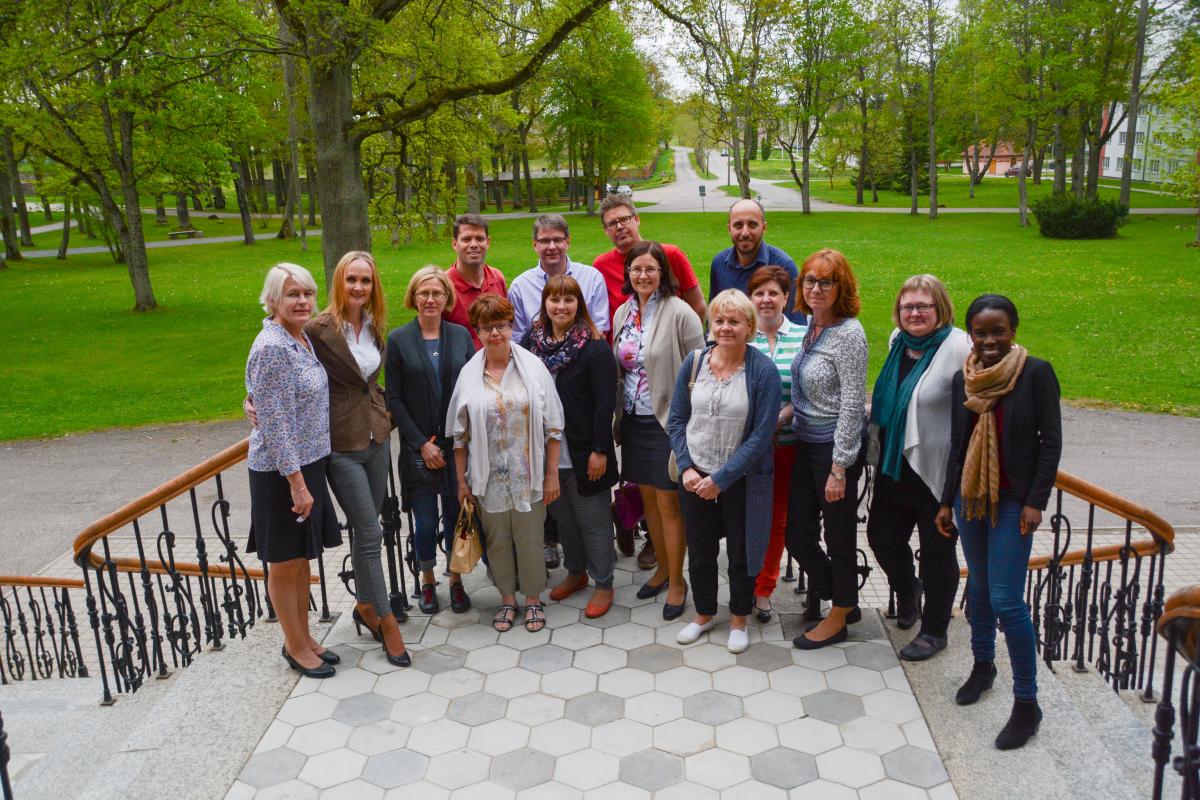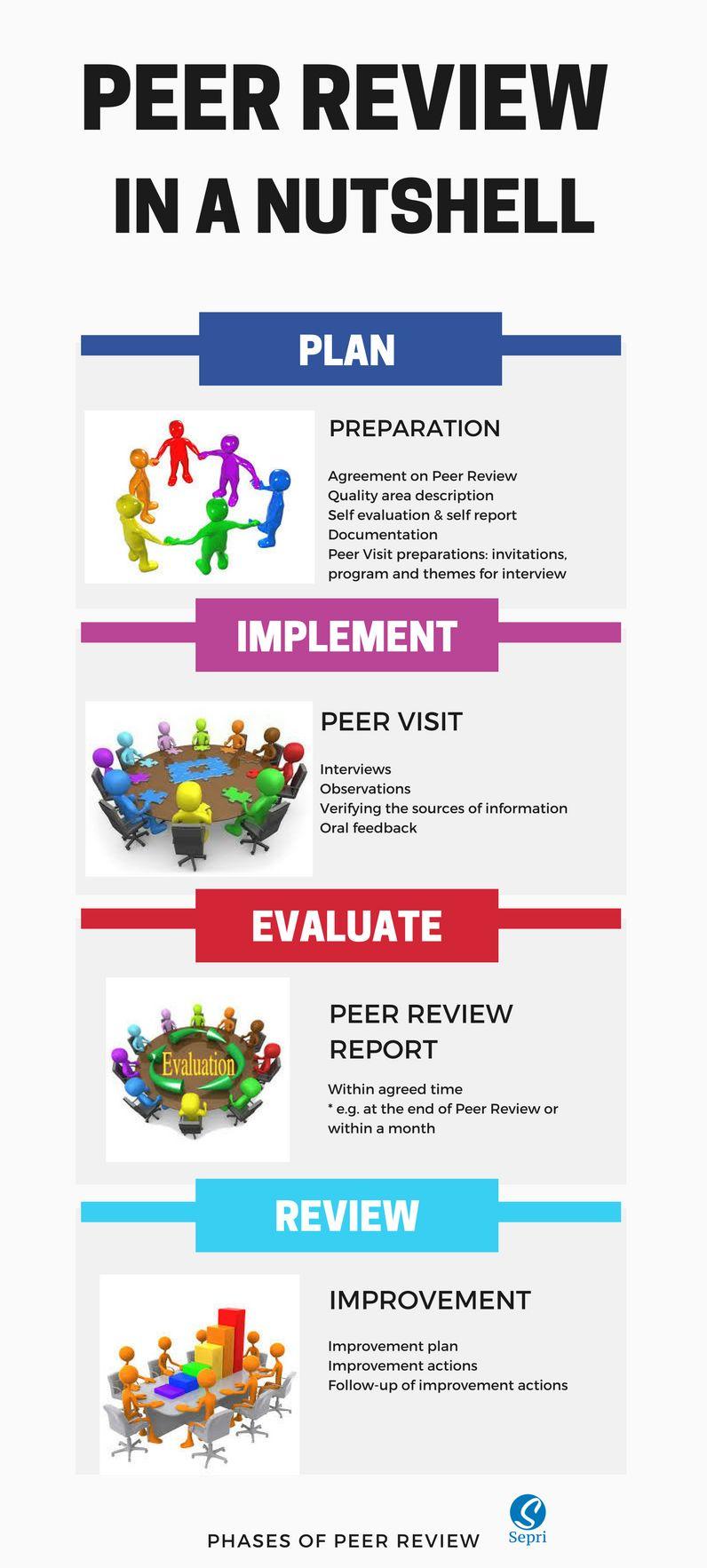






The guidelines are based on the Peer Review processes carried out in SEPRI - Strength from Peer Review – developing the quality in international activities in VET project, funded by CIMO Erasmus+ program. CIMO is the national agency for the European Union’s education and youth programmes.
The European Commission support for the production of this publication does not constitute an endorsement of the contents which reflects the views only of the authors, and the Commission cannot be held responsible for any use which may be made of the information contained therein.
Seven European organizations from five European countries working in the field of vocational education and training VET in order to improve the quality of international activities in VET.
The joint need to get qualitative feedback on international activities.
Four quality areas to be evaluated: student mobility, staff mobility, international projects and international activities.
Quality management and continuous improvement are more and more important for all education, including vocational education and training (VET) across Europe. Peer Review is a tool to help your organization to improve the quality of your organization’s processes by benefiting from the experience of national or international colleagues.
- Exchange practices with European colleagues and observe how things are done in other countries
- Strengthen and build new partnerships
The idea of the Peer Review is simple:
experts working in the same field evaluate each others´ organizations and help them to identify their strengths and areas of development.
The process of Peer Review can be broken down in four phases based on the quality cycle. (Deming / EQAVET)
1. Preparation (Plan/Planning)
2. Peer Visit (Do/Implementation)
3. Feedback and Peer Review Report (Check/Evaluation)
4. Improvement (Act/Review)
The complete Guidelines for Peer Review to evaluate the internationalization in VET can be found here
Find committed, like-minded partners.
Agree on the Peer Review to be carried out: objectives, scope and length of the process, resources needed and quality areas evaluated.
Peer Review is based on trust. The organization to be evaluated will open its doors and show others its processes. The Peer Reviewed organisation needs to trust the Peers in order to show them its performance and encourage the staff members to share their opinions.
- Carry out an international Peer Review in a network of maximum four organizations from four countries.
- Ideal number of trained Peers in one Peer Team is four. Too many organizations make the planning and implementation of the Peer Review more complicated.
- Make sure that everybody has a clear role in the Peer Team.
- Quality area or areas to be Peer Reviewed
- Criteria to be used
- Peer Teams: a good Peer is someone who has expertise in the domain you want to evaluate, who can commit to Peer Review and who has the language skills to communicate independently in the Peer Team.
- Peer Team leader with experience
- Contact person of the Peer Reviewed organization to act as a link between the Peer Team and the organization
- Confidentiality agreement between the Peer Team and the organization
- Scheduling of the Peer Visit should be done in good time before Peer Visit. Reserve at least two days plus traveling for the Peer Visit.
- If the interpretation services are needed choose people who have no stake in the process so they will simply translate and do not add information while translating.
- Written description of activities of the chosen quality area.
- Basic information of the organization
- Educational system of the country
- The documents must be sent to the Peer Team leader a month before the Peer Visit.
- Peer Reviewed organization has to carry out a self evaluation and to provide a self evaluation report.
- The report must be sent to the Peer Team leader at the same time as the description of activities.
- Logistics: if you decide to visit many sites in a big organization make sure you have enough time in your program for transportation, delays, rest.
- Accommodation: have all the Peers stay in the same hotel so they can spend time together and it is easier for logistics.
- Booking of the facilities: reserve one interview room for each group interviewed. Don’t forget to plan for snacks and refreshments as interviews are tiring and it is a long day for Peers!
- Reserve a room for the final debriefing and writing the final report. Provide a video projector so the team can write the final report together.
- Reserve a room for the final report feedback session. If you have interviewed people in different sites, arrange a videoconference so everyone can attend the feedback session.
- Select the people to be interviewed : after receiving the preliminary program from the Peer Team leader, invite the people to be interviewed. Have groups of 2 to 4 people in each interview, with one Peer interviewing and one Peer taking notes. In order to cross-analyze information interview two same type groups, e.g. two different teacher groups.
- Scheduling: follow the agreed timetable and don’t forget to leave time for preparation. Leave breaks between interviews. Plan for a short debriefing after each interview, during which the criteria grid is used to collect information on strengths and weaknesses. Plan for collective debrief at the end of the interviews.
Peer Team plans the Peer Visit program and makes suggestions on the groups to be interviewed.
Peer Team leader sends the draft program to the contact person for approval.
An interview lasts between 45 minutes to an hour. Prepare 8 to 12 questions. Start with an icebreaker question. Always use open-ended questions.
Have a Peer Team meeting before the actual Peer Visit starts in order to get to know each other better and to check the Peer Review plans for the visit.
Representatives of the organization should give a short presentation on the organization reviewed.
- Meals and social visits are a way to build trust among peers and among organizations. It is also a way to showcase the reviewed organization’s activities e.g. VET training restaurant.
Feedback session is organized at the end of the second day.
Peer Team leader presents the report to the audience.
Feedback consists of general observations, strengths and areas for development.
Feedback should always be positive but constructive.
You are not there to judge!
- Introduction about the project and its objectives
- Quality area reviewed
- Peer Team members
- People interviewed
- Strengths of the organization/qualities of the processes implemented
- Areas for development